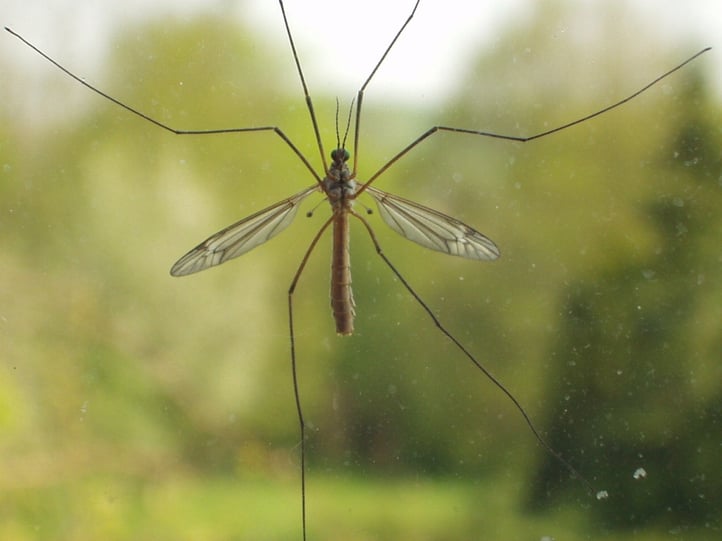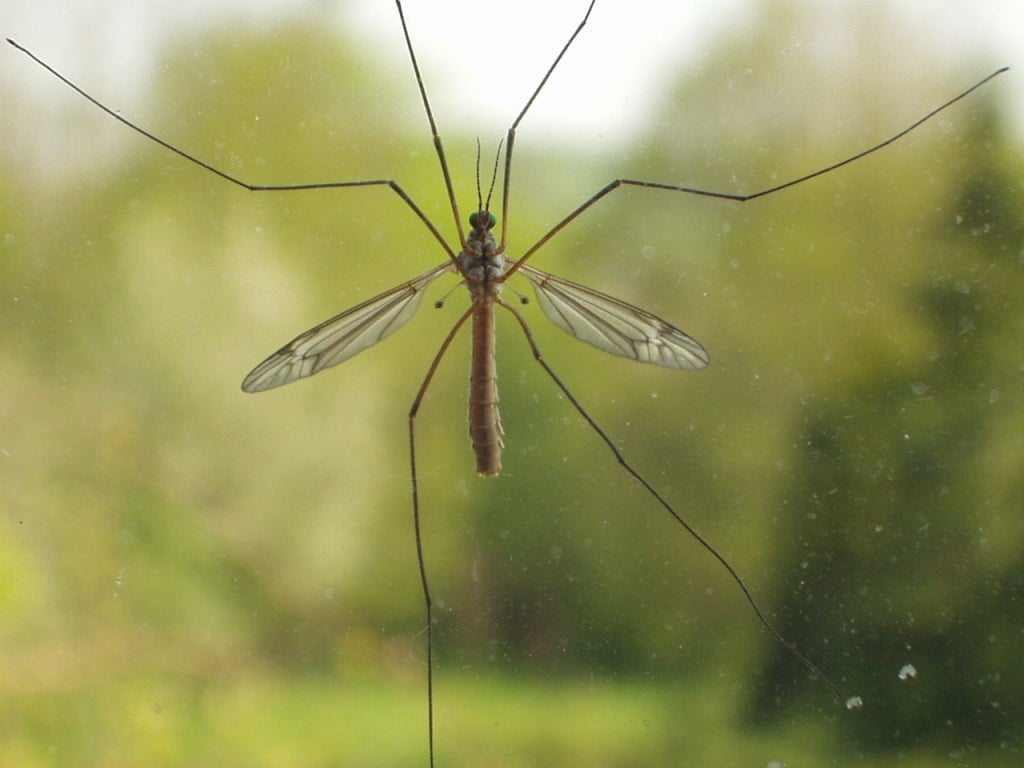
The European Crane Fly is native to Eurasia, but has been present in Canada since the mid 1950s. It is found throughout both the east and west coast and throughout southwestern, central and eastern Ontario. These pests live in the top layer of soil and feast on the root hairs, blades and crowns of lawn grasses and can cause extensive damage to your property.
What Do They Look Like?
European Crane Flies look like mosquitoes with exceptionally long wings and legs. They don’t bite like mosquitoes and are not great at flying. You’ll find them congregating on window and door screens, fences, sides of buildings, etc. The adult European Crane Flies are annoying, but not harmful to your lawn. However, if adults are gathering on or near your home, chances are very good there are larvae in the soil. Each fall, the female adults can lay between 200 – 500 eggs and they’ll hatch into larvae and stay in the soil until they emerge as adults the following late summer and fall.
The larvae are called leatherjackets. They somewhat resemble maggots in shape, but are light grey to greenish in colour and grow to 1.5 to 2 inches in length. They have no legs and taper at each end. European Crane Flies take about one year to mature, and it’s during the third and fourth larvae stage where lawn damage become visible – typically in May and June.
What Conditions Do They Favour?
European crane fly larvae prefer moderately wet soil. When heavy spring rains flood the soil, the larvae are forced to the surface where they are easy pickings for birds or end up on pavement where they dry out and die. They can’t survive under water but can’t survive in overly dry soil either.
They feed on top of the thatch on the blades of grass and by late spring move into the soil where they won’t emerge again until September as adults. Later in the season, you may find the empty casings (shells) of the larvae on top of the lawn. By this point, they’ve already caused the damage to your lawn though.
Lawn Damage
European crane fly larvae will cause fist-sized brown spots to emerge in your lawn in early spring. The more larvae, the more damage they cause. Secondary damage to your lawn may be caused by birds or skunks digging to unearth the tasty treats. The older larvae only emerge at night to feed, which is perfect dining time for skunks.
Eradication
Beneficial nematodes are an organic solution if applied in a timely fashion at eradicating the larvae. There needs to be a large concentration of the larvae in a small area to cause visible damage. A great defense is a thick and healthy lawn. Most grasses are able to compensate for small amounts of root damage, but lawns that are already stressed or battling another pest or disease will be more vulnerable.
Be sure to dethatch and aerate your lawn once a year. Water deeply and let the soil dry out between waterings, rather than more frequent shallow watering. Your grass will thank you and you’ll reduce the number of larvae in your lawn also.
Our lawn care experts will work with you to develop a customized lawn care and weed control program that’s right for your lawn, your budget and our local Ottawa climate. Contact Nutri-Lawn Ottawa now for your free, no obligation quote.






